Shelomo Selinger | |
|---|---|
 Shelomo Selinger in his studio | |
| Born | 31 May 1928 |
| Website | museum-selinger |
Shelomo Selinger (born 31 May 1928) is a sculptor and artist living and working in Paris since 1956.
Shelomo Selinger | |
|---|---|
 Shelomo Selinger in his studio | |
| Born | 31 May 1928 |
| Website | museum-selinger |
Shelomo Selinger (born 31 May 1928) is a sculptor and artist living and working in Paris since 1956.

Selinger was born to a Jewish family in the small Polish town of Szczakowa (today part of Jaworzno) near Oświęcim (Auschwitz [1] ). He received both a traditional Jewish upbringing and a Polish public school education. In 1943 he was deported with his father from the Chrzanów ghetto to the Faulbrück concentration camp in Germany. Three months later his father was murdered and Selinger remained alone in the camp. His mother and one of his sisters also perished during the Holocaust. Selinger survived nine German death camps: Faulbrück, Gröditz, Markstadt, Fünfteichen, Gross-Rosen, Flossenburg, Dresden, Leitmeritz and finally Theresienstadt, as well as two death marches.
He was discovered, still breathing, on a stack of dead bodies when the Terezin camp was liberated in 1945 by the Red Army. The Jewish military doctor who pulled him out of the pile of corpses transferred him to a military field hospital, where he recovered his health, but was completely amnesic for seven years.
In 1946 he boarded the Tel Haï, a ship leaving La Ciotat and headed to the then British Mandate Palestine with a group of young death camps survivors who, with the help of the Jewish Brigade of the British Army, had crossed illegally through Germany, Belgium and France. The ship was seized outside the territorial waters of Haifa by the British Royal Navy. The passengers, none of whom had immigration certificates, were interned in the Atlit detainee camp.
After his liberation from the camp, Selinger joined the Beit HaArava kibbutz near the Dead Sea. During the 1948 Palestine war he participated in the Sodom battle, while his kibbutz was destroyed. He was then one of the founders of the Kabri kibbutz in the Galilee, where in 1951 he met his future wife, Ruth Shapirovsky, who came to the kibbutz as a volunteer worker with her Haifa high school class. They were married in 1954. At that time Selinger began to fill in the gaps in his memory and to sculpt.
In 1955 Selinger was awarded the Norman Prize of the America-Israel Cultural Foundation. A year later he enrolled in Paris at the École nationale supérieure des Beaux-Arts where he studied traditional clay modelling with Marcel Gimond. However, he did not abandon his own personal style and continued carving directly on working materials with hammers, sledgehammers and chisels.
Too poor to buy his own art materials, Selinger hunted for stone blocks in the slum belt of Paris and returned with a very dense and hard bloc of granite capable of capturing and reflecting light. Granite became his favourite stone. Romanian sculptor Constantin Brâncuși introduced him to Vosges' sandstone ("Grès des Vosges") and gave him a grindstone of this reddish stone, a symbolic present to Selinger as a successor to Brâncuși's direct carving technique. Selinger also carved wood, mostly using easily available firewood.
After three years in the Beaux Arts school, Selinger started attending what he called the "best school of all", the museums of Paris (primarily the Louvre) and the studios of Parisian sculptors including Ossip Zadkine, Jean Arp, Alberto Giacometti and Joseph Constant. A sculpture named "Motherhood", inspired by his wife and the birth of their son Rami, earned him the Neumann Prize of the city of Geneva, the first acknowledgement of his talent in Paris. The work is now part of the permanent collection of the Musée d'Art Moderne de la Ville de Paris. Thus Selinger—a survivor of the German death camps—became a renowned sculptor of birth, rebirth and life itself.
The Jewish Museum of New York discovered Selinger in 1960 and displayed seven of his sculptures. After Paris art gallery owner Michel Dauberville became owner of his parents' gallery, the Galerie Galerie Bernheim-Jeune, he gave many exhibitions of Selinger's work from the 1960s through the first decade of the 21st century.
Further recognition came to Selinger in 1973 when he won first prize in an international competition with his monument "The Gates of Hell", in memory of those who passed through Drancy internment camp on the outskirts of Paris during World War II.
In 1973 Selinger was named Chevalier to the prestigious French Legion of Honour by President François Mitterrand. Since 2006, he has had the title "Officier de la Légion d'Honneur".
Currently living in Paris with his wife, Selinger contributes to work in marble, granite, stone and wood.
My partners in creation are matter and light. Every stone has its own specific personality and this has to be respected. I contemplate for a long time before I discover the dormant form inside. My task is to bring the form to light. The transition from shadow to light is the secret of sculpting. In my wood sculptures I follow the natural forms of the wood and I try to bring forth a shape that can enable light to burst forth. I am amazed time and again at how the very structure of my piece of wood, its veins and its fibres, take control of my creation. I carve directly in stone. My tools are my hammer, my chisel and my hands. I think they are perfect for conveying and reflecting my feelings. I have never used machinery. Machines follow their own pattern and their rhythm is too fast. My unquenchable thirst for freedom, as well as my quest for light, a consequence of my life in the camps, are ever-present in my work. The technique of direct hand carving in stone or wood is an everlasting remainder and reminder of my time as a prisoner digging a tunnel to freedom. The prisoner, who drills, bores and excavates, hopes to be free once his tunnel is finished and the light at the end of it is revealed. In truth he is neither free before, neither during his digging nor after his escape. My salvation is in the very act of digging and carving. Once I finish a piece I start a new one immediately. I am never short of inspiration nor of a subject.
Selinger's work on the Mémorial national des Déportés de France (French National Deportation Memorial) in Drancy, in rose coloured granite, took two years of carving by hand and was unveiled in 1976. The Mémorial de la Résistance in La Courneuve followed in 1987. In the meantime Selinger created the Requiem pour les Juifs d'Allemagne (Requiem for German Jews) (1980) in Bosen, Saarland and the Monument aux Justes parmi les Nations (Monument for the Unknown Righteous among the Nations) at Yad Vashem in Jerusalem(1987). Selinger started treating monumental statuary in open space in 1964 with his sculpture L'Esprit et la matière n° 1 (Spirit and matter n° 1), erected in Saint-Avold (Moselle), followed by L'Esprit et la matière n° 2 in Wissembourg (Bas-Rhin). The superb white marble Moise ou la Victoire de la lumière (Moses or the Victory of Light), set up in Aranđelovac (Serbia) has kept its head but the prophet's rays were destroyed by lightning.
Some of his other important open-air monuments are La tauromachie at the bullring of Le Bouscat (Gironde) in 1974, La Danse, a group of 35 flower boxes created in 1982, stretching from the place Basse of the Esplanade Charles-de-Gaulle, to the La Défense (Hauts-de-Seine), covering an area of 3.600 square meters and the Groupe de 13 sculptures (1991) in the Tel-Hai Industrial park in the Galilee, a part of the 24 granite and basalt sculptures bought by the Open Air Museum of Tefen. These works are on display in Tel-Aviv, in Omer or in Lavon. Since 1998, Le prophète Elie (The Prophet Elijah) towers over the Mount Carmel dominating Haifa.
Selinger's sculptures comprise today more than 800 works in all possible materials and sizes, granite, red granite, sandstone, marble, bronze, oak, blackwood, cherry wood, ash tree or beech. Forty-eight monumental open-air statues are exhibited in public places. Five of these monuments are dedicated to The Holocaust and the Résistance.
On the 103rd anniversary of the 1906 rehabilitation of Alfred Dreyfus, the first deputy mayor of Paris, Anne Hidalgo, announced the creation of a new association. The association proposes to launch a national subscription campaign for the erection of a statue of Émile Zola on the Place Alfred Dreyfus in the 15th arrondissement of Paris. The sculptor will be Shelomo Selinger.
Selinger's graphic works in Indian ink and/or charcoal number thousands. Part of his drawings represents his concentration camp experience, but most of his works are real celebrations of life. Shelomo Selinger's works were exhibited in about forty museums and galleries all over the world.
Paris. Somogy Edition d'Art. 2005.
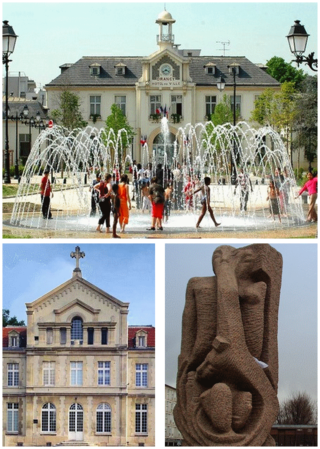
Drancy is a commune in the northeastern suburbs of Paris in the Seine-Saint-Denis department in northern France. It is located 10.8 km (6.7 mi) from the center of Paris.

Drancy internment camp was an assembly and detention camp for confining Jews who were later deported to the extermination camps during the German occupation of France during World War II. Originally conceived and built as a modernist urban community under the name La Cité de la Muette, it was located in Drancy, a northeastern suburb of Paris, France.

Menashe Kadishman was an Israeli sculptor and painter.

Igael Tumarkin was an Israeli painter and sculptor.

Amos Gitai is an Israeli filmmaker, who was trained as an architect.

Daniel "Dani" Karavan was an Israeli sculptor best known for site specific memorials and monuments which merge into the environment.

The Vel' d'Hiv' Roundup was a mass arrest of foreign Jewish families by French police and gendarmes at the behest of the German authorities, that took place in Paris on 16 and 17 July 1942. According to records of the Préfecture de Police, 13,152 Jews were arrested, including more than 4,000 children.
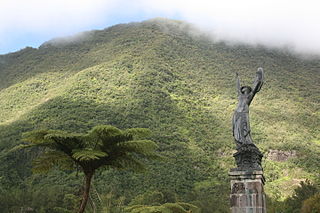
Charles Marie Louis Joseph Sarrabezolles, also known as Carlo Sarrabezolles, was a French sculptor.

Tetsuo Harada is a Japanese-French artist based in France, well known for his monumental direct carving sculptures on granite and marble. In the 1990s he came to many recognition with his "Earth Weaving" theme, binding nations in fraternity with granite rings. He explored a wide universe of materials and shapes but the themes of pacifism, Nature (earth), sexuality and fertility remain prevalent. His sculptures can be seen around the world in private collections, museums and the streets as monumental public works, or ephemeral Land-art installations. His work is often linked to the one of Isamu Noguchi, Constantin Brâncuși, Barbara Hepworth, Henry Moore or the biomorphic aesthetic movement in general. He studied at Tamabi University Tokyo with Professor Tatehata, Beaux-arts de Paris with Professor Colamarigny, Jean Cardot fr:Jean Cardot. He now lives and works mostly in Paris, France, and carves granite in his large studio in Fresnay l'Eveque near Chartres in the Beauce area, Eure et Loir region. He produced quantities of sketches, drawings and paintings, as finished art piece or researches for future sculptures. In late years his work was promoted actively by his wife Annie Harada and his second son Cesar Minoru Harada, now student at the Royal College of Art. His first son Narito Harada is a lawyer specialized in Environment working for NGO like Greenpeace. Tetsuo Harada teaches fine art and urban design at the National Superior Architecture School of Versailles (ENSAV), from which Since 30 years he is establishing educational programs and cultural bridges between Asian Universities and European Universities.

Mike Brant was an Israeli singer and songwriter who achieved fame after moving to France. His most successful hit was "Laisse-moi t'aimer". Brant died by suicide at the height of his career by jumping from a window of an apartment in Paris. He was known for his vocal range going from baritone to high tenor and also a very high and powerful falsetto.
André Tulard (1899–1967) was a French civil administrator and police inspector. He is known for having created the "Tulard files," which censused Jews in Vichy France. Tulard was head of the Service of Foreigners and Jewish Affairs at the Prefecture of Police of Paris.
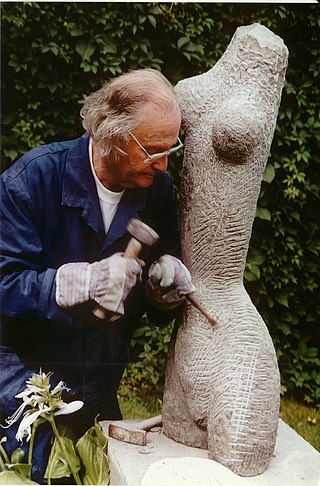
Achiam was a Franco-Israeli sculptor who worked around Paris after 1947. His work consists largely of direct carvings in stone and wood—very plain, pure forms, mostly figurative.

Yechiel Shemi (1922-2003) was an Israeli sculptor. His environmental sculptures are displayed in open spaces around the country.
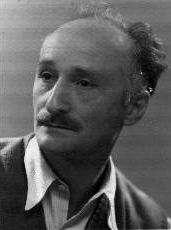
Alexander Bogen was a Polish-Israeli visual artist, a decorated leader of partisans during World War II, a key player in 20th century Yiddish culture, and one of the trailblazers for art education and Artists' associations in the emerging state of Israel.
Élie Le Goff was a French sculptor born in 1858 and who died in 1938. He was a pupil of Henri Chapu and Paul Guibe and was the father of Paul, Élie junior and Henri who were all artists and sculptors. All three sons lost their lives in the 1914–1918 war. Élie junior and Paul both joined the 71st Infantry Regiment in August 1914 then moved to the 74th Infantry Regiment, both dying from gas inhalation at Boezinge in Belgium on 22 April 1915. Henri was killed in 1918 in fighting around the Meuse.
The Center for Contemporary Jewish Documentation is an independent French organization founded by Isaac Schneersohn in 1943 in the town of Grenoble, France during the Second World War to preserve the evidence of Nazi war crimes for future generations. After the Liberation, the center was moved to Paris in 1944 where it remains today.
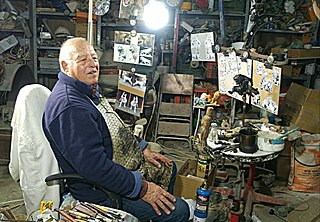
Asaf Lifshitz is an Israeli sculptor. Many of his statues decorate different central places all over Israel, from Metula in the north to Beer Sheva in the south.
The Memorial to the Victims of the Shoah was inaugurated on 17 June 2018 in the city of Luxembourg. The monument commemorates the persecution, deportation and murder of native Jews and those who fled to Luxembourg during the National Socialist dictatorship. The 17th of June 2018 was chosen for the inauguration because 75 years earlier, on the 17th of June 1943, the last deportation train with Jews had left Luxembourg, and the location, Boulevard Roosevelt, because the first synagogue of Luxembourg existed nearby.
Denise Holstein is an Auschwitz concentration camp survivor and Holocaust witness, who was liberated on 15 April 1945. As a Holocaust witness, Holstein tells her story in two books and in a documentary made by a student from the Lycée Corneille in Rouen. For almost fifty years, Holstein never spoke about her life before writing about it. As a Holocaust witness, Holstein visits school children, to describe and share her experiences.